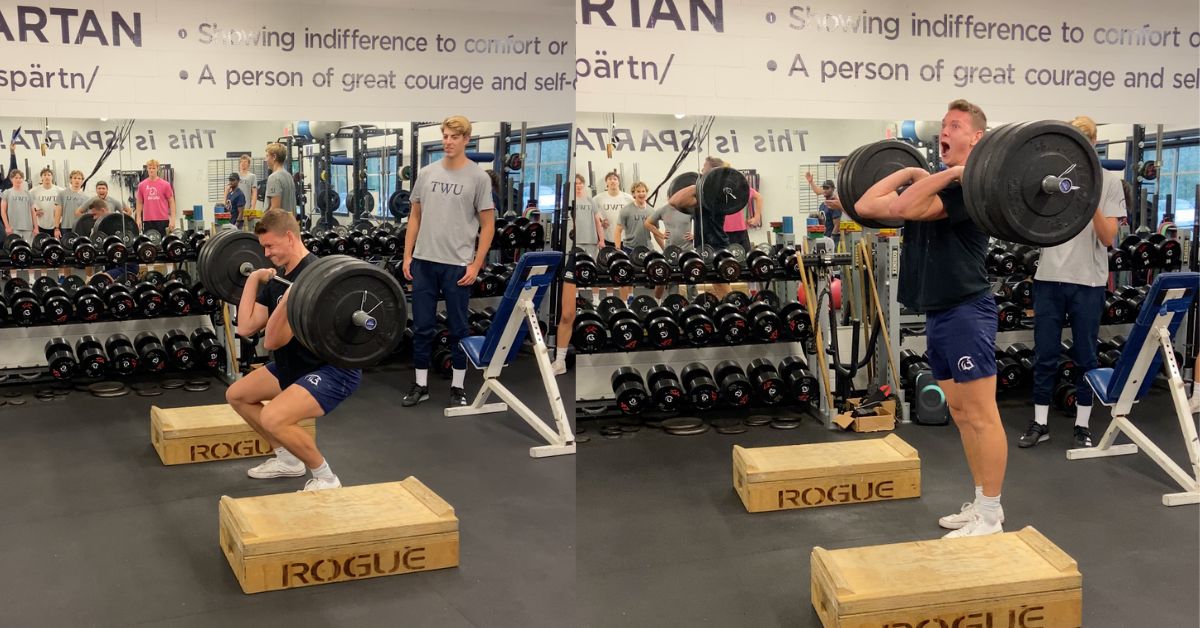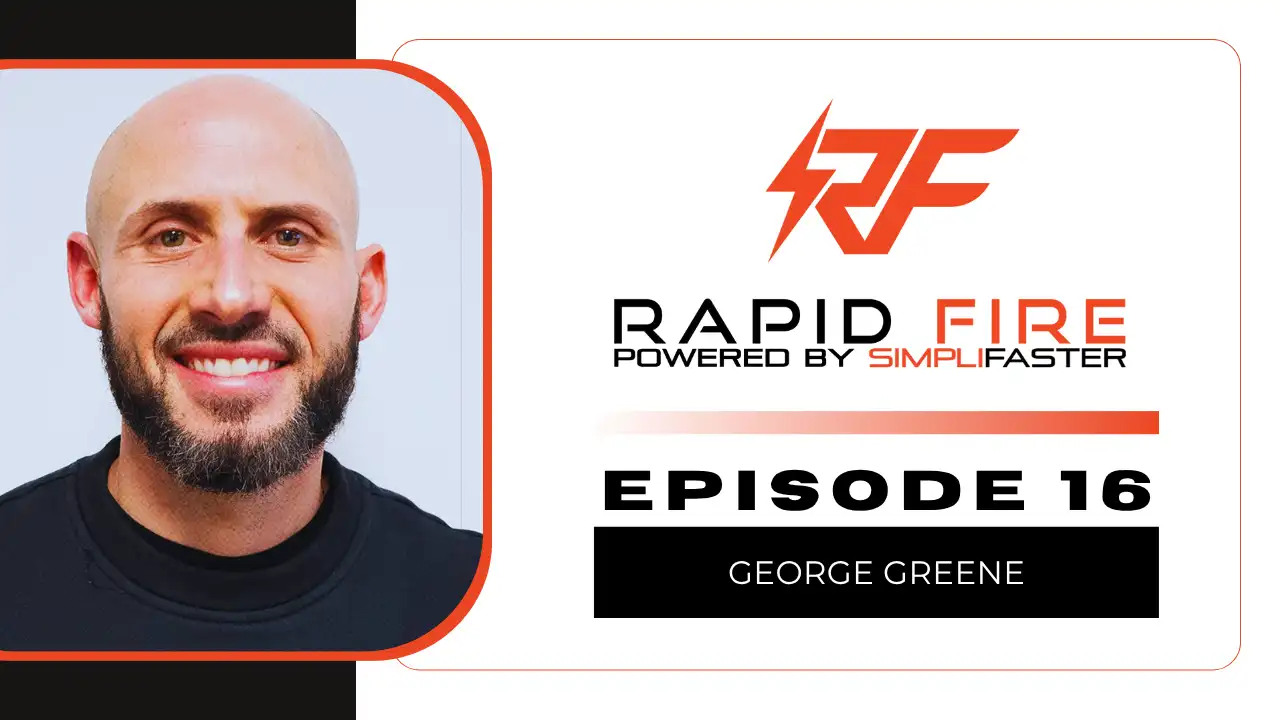If you’re an S&C Coach, you probably sit on one side or the other of the Olympic lifting fence. Whether you use them or not, it is hard to deny their benefits for athletes. Whether you are chasing force production, rate of force development, or even mobility, it’s hard to deny that these benefits (and more) can be gained by getting good at the clean or snatch variations.
I personally competed in Olympic Weightlifting for over five years, so I know firsthand how challenging and fun they can be. Because of that, you might look at me and say, “Oh, you must be an Olympic lifting guy.” However, even I don’t use them with all my teams and athletes. For me, they are just tools in the toolbox—I can use the tools to get those benefits, but they are not the only ones I have (nor should they be for you). I most often use them with our volleyball teams, but also have used them with soccer, track and field, and rugby. Plus, I typically just use the hang power variations of snatch and clean, sometimes dabbling into other variations (muscle snatch, clean pulls, etc). More often than not, I will stick with the basics (and easiest to learn), which are the hang power variations. “Hang” meaning the movement starts above the knees and “power” meaning you catch it above 90 degrees.
I want to share with you the way I program Olympic lifts and how I have used this system to develop some pretty powerful kids who throw up some HUGE weight, says @chergott9. Share on XWhen I competed in weightlifting, I had a coach who would write my programs. Those would be periodized out with percentages so that I would peak for my next competition. As an S&C coach for athletes, I very rarely use percentages. While I would love to dive into my thoughts on that, that is a topic for another article.
So, your next thought might be, “How do you program Olympic Lifts for your athletes without percentages?” That is a great question and the main idea behind this article.
The Rep-Drop Method
I want to share with you the way I program Olympic lifts and how I have used this system to develop some pretty powerful kids who throw up some HUGE weight.
Video 1. Here is one of our volleyball guys throwing 3 plates around for a double. Crazy.
For starters, Olympic lifting is much more technical that other lifts. When it comes to progressing in the Olympic lifts, it can be quite easy at first because there is such a large skill component to it and you are able to increase the weight simply by getting better at the skill of doing them.
But, once your technique becomes “good,” the gains come very slowly. Yes, they come slow for squats, bench, and deadlifts too once you are moderately trained, but I have found that a technical lift like the Olympic variations come even slower. While I do not exactly know why, my best guess would be simply because the exercise is so technical. Plus, it’s done very fast, so it isn’t something you can just “grind through” like a heavy bench or squat set. You either get the rep or not within the first 0.5 seconds. So, if you are feeling at all sluggish that day, it’s over for you.
For an S&C coach who doesn’t use percentages, and whose athletes don’t compete in that as a sport, what is the best way to prescribe sets and reps to ensure gains? Here is my answer, says @chergott9. Share on XUsing percentages in Olympic Weightlifting can be a great way to wave load, deload, and accumulate volume so that you can hit your PRs at the right time (in competition). But for an S&C coach who doesn’t use percentages, and whose athletes don’t compete in that as a sport, what is the best way to prescribe sets and reps to ensure gains? Here is my answer and what I have found to work quite well over the last 3-4 years with my teams.
This is actually quite simple, and while I have used it with other exercises (squats, bench) I find that it works the best for the Olympic variations. Therefore, I consistently use it with them. For weight selection, I always encourage athletes to choose a weight they can confidently get for four reps at first, then each week we progress. The idea is not to hit a 4RM Week1, then a 3RM Week 2, etc., but to gain experience hitting good quality reps to learn the movement for the heavier work to come.
- Week 1: 4 x 4
- Week 2: 4, 4, 3, 3
- Week 3: 4 x 3
- Week 4: 3, 3, 2, 2
- Week 5: 4 x 2
- Week 6: 4, 3, 2, 1
- Week 7: Restart at 4 x 4
Simple, right?
There are probably many reasons why it actually works physiologically, but here are three reasons I like it:
- With an explosive movement, you want more volume to get the most benefits from it as well as more “practice” to learn the technique (hard to learn with one set). So, doing four is a great way to get lots of work on it without taking too much time (we only have one-hour slots and more exercises to do in a session than just these).
- Doing five reps is cardio with Olympic Lifting (especially for volleyball players), hence I drop the hard/accumulation weeks to four reps. Still sucks, though.
- With this, you have six weeks of programming all lined up. Six weeks is a great amount of time to make gains and progress over the course of a semester. And the progression makes it simple to add weight because there are less reps every week. By dropping a rep each week, athletes have a better chance of adding more weight to the bar.
While the first six weeks are great, Week 7 is where the magic starts to happen. The goal when you restart in Week 7 is that you do more weight. So, while the weight you use for four reps in Week 1 might not change when you do four reps in Week 2, the goal is that you add 5-10 lbs to at least one set of four when you hit Week 7. Then, more weight in Week 8 than Week 2, and so on. It sounds simple and maybe too easy, but it really does work.
Giving athletes a chance to go for it and do more weight than they have ever done before is a pretty potent training stimulus and effective way to challenge the mind and body, says @chergott9. Share on XI know progressive overload is something we all preach (add weight to the bar), but this six-week cycle gives athletes time to not only get stronger but get better at the movement with lots of reps. Because we perform so many reps, when we get around to the second or third cycle, they are able to add weight. This way, we aren’t forcing more weight onto the bar with the same rep scheme week to week and we end up “starfishing” our catches. We add weight because the reps go down. Then, we are able to add weight because we are more powerful and better at cleaning or snatching.
Plus, with this style, every six weeks you get a shot at a new PR (personal record). I always tell athletes that you don’t HAVE to hit a 1RM those weeks, but just go for something heavy. I know the injury risk of Olympic lifting isn’t super high, but it isn’t exactly low as far as weight room exercises go—so having them max out is not something I am a huge fan of all the time, especially in-season. However, giving athletes a chance to “go for it” if they feel good and do more weight than they have ever done before is a pretty potent training stimulus and effective way to challenge the mind and body.
There you have it. Simple. Effective.
Trusting the Process
As mentioned, I have been using this with some of our teams—primarily volleyball teams—365 days a year for the last 3-4 years straight (save for a couple weeks here and there where we take a break from these lifts). Obviously, it takes lots of hard work and commitment to the process, but I have been blessed to work with athletes who trust me, work hard, and love to learn and get better at these lifts. Plus, these athletes have often commented on how much better they feel on the court, how confident they feel, and how much higher they are jumping. Over the last couple of years, the most frequent comment their coaches give me is “Cole, the team is looking very physical,” so I feel like that is a good thing to hear!
Again, you can see the video above of our volleyball teams getting after it, or find more on our Instagram page (@twustrength)—they love it! And while their progress is obviously a product of their hard work in the weight room, this template for programming allows that work to create gains and progress to being the beasts they are.
Peace. Gains.
Since you’re here…
…we have a small favor to ask. More people are reading SimpliFaster than ever, and each week we bring you compelling content from coaches, sport scientists, and physiotherapists who are devoted to building better athletes. Please take a moment to share the articles on social media, engage the authors with questions and comments below, and link to articles when appropriate if you have a blog or participate on forums of related topics. — SF






